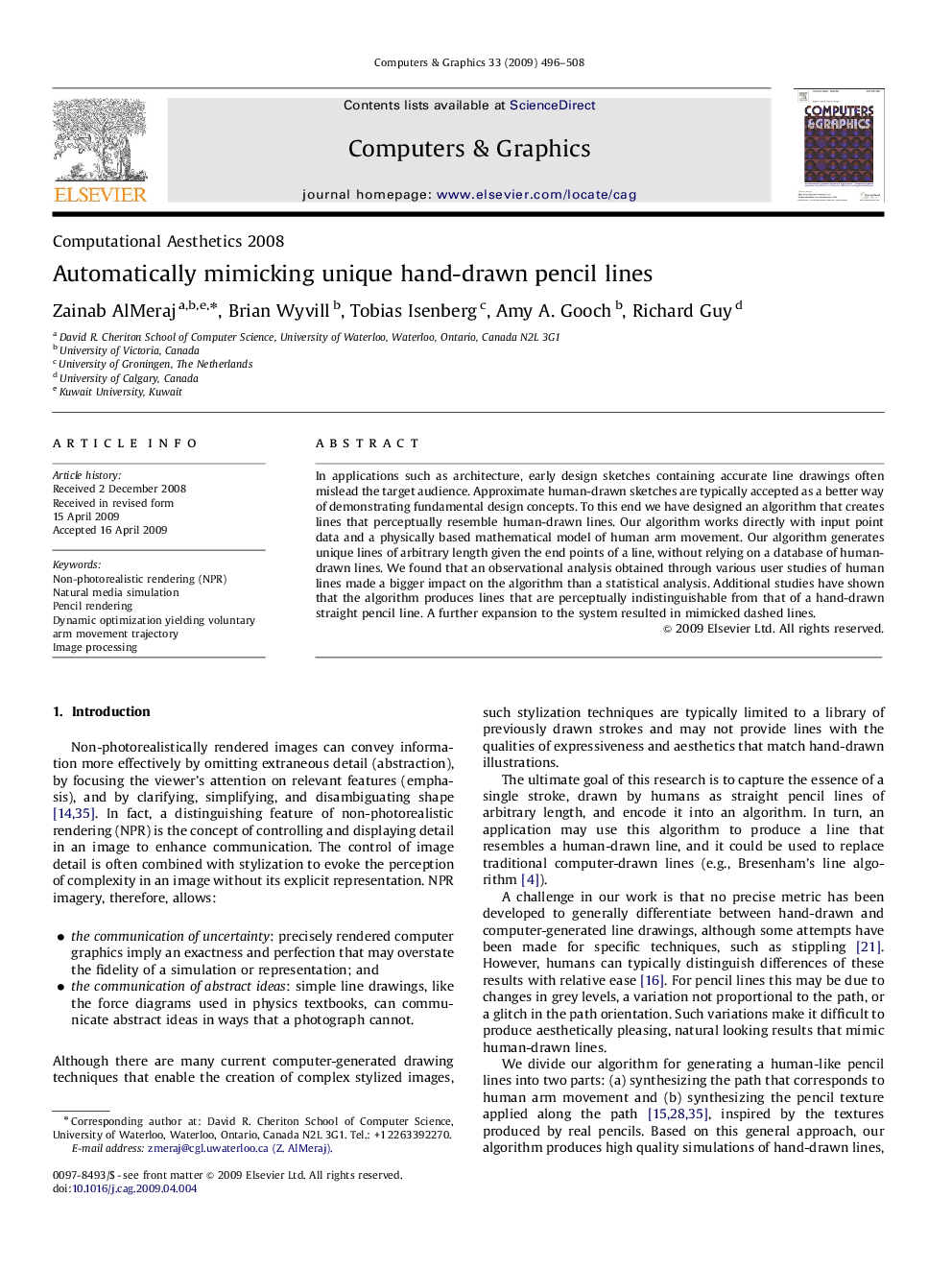| Article ID | Journal | Published Year | Pages | File Type |
|---|---|---|---|---|
| 442193 | Computers & Graphics | 2009 | 13 Pages |
In applications such as architecture, early design sketches containing accurate line drawings often mislead the target audience. Approximate human-drawn sketches are typically accepted as a better way of demonstrating fundamental design concepts. To this end we have designed an algorithm that creates lines that perceptually resemble human-drawn lines. Our algorithm works directly with input point data and a physically based mathematical model of human arm movement. Our algorithm generates unique lines of arbitrary length given the end points of a line, without relying on a database of human-drawn lines. We found that an observational analysis obtained through various user studies of human lines made a bigger impact on the algorithm than a statistical analysis. Additional studies have shown that the algorithm produces lines that are perceptually indistinguishable from that of a hand-drawn straight pencil line. A further expansion to the system resulted in mimicked dashed lines.
